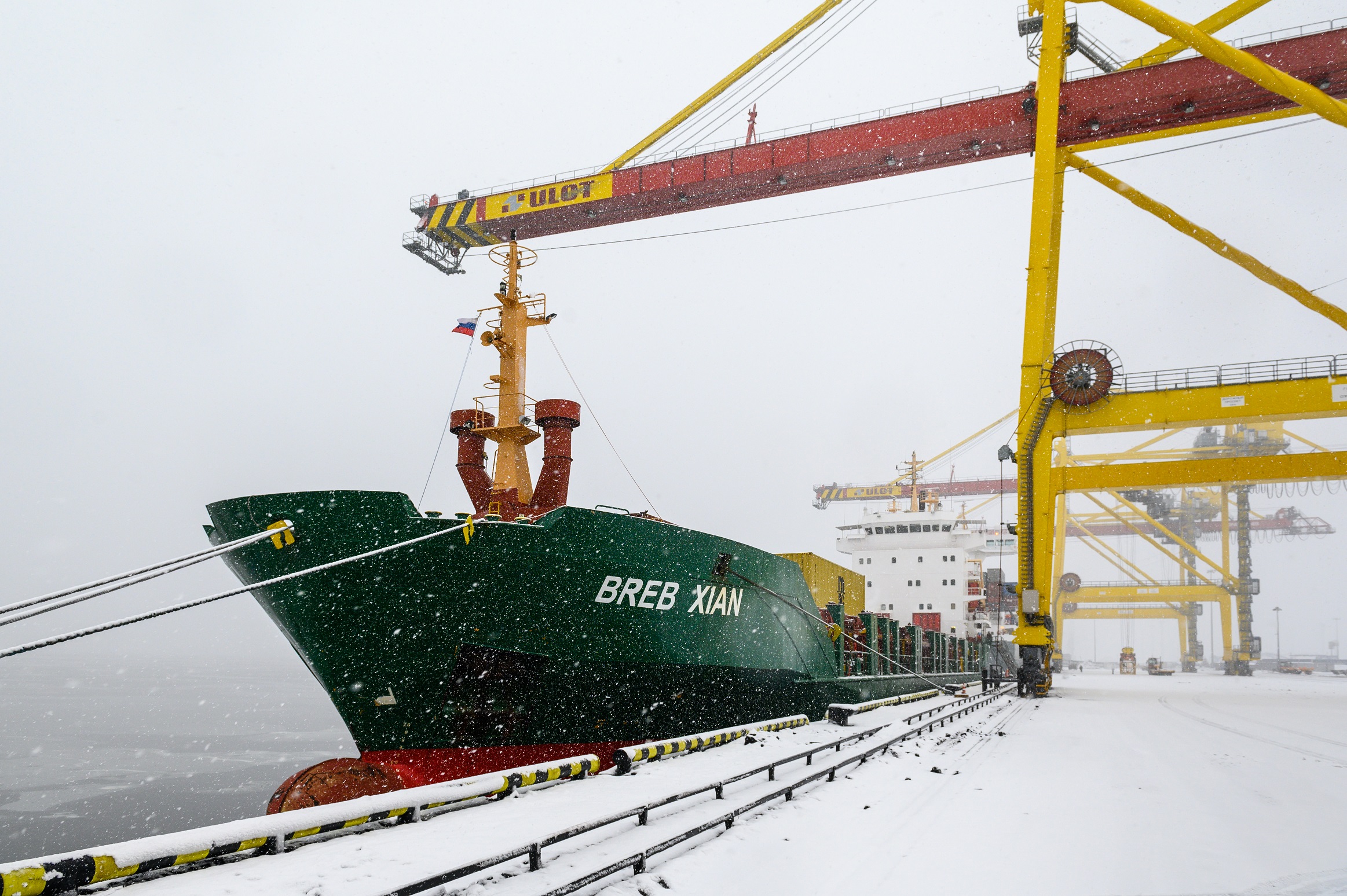
Ust-Luga Container Terminal (“ULCT”), a Global Ports Group company located in the deep-sea port of Ust-Luga, started servicing a new intermodal container delivery service on the China-Germany route in January 2022, says press center of Global Ports Group. The project is being implemented in partnership with TransContainer (organising the transportation of cargo by rail in Russia and China), the German port of Mukran and the Baltic Sea Bridge line (acting as customers for the project), and Ruscon (acting as a forwarder and agent in the port of Ust-Luga).
Regular container trains carrying Chinese goods depart from Wuhan and go via Manchuria and Zabaikalsk to Ust-Luga. The transit time via the territory of Russia is 9 days. In Ust-Luga, containers are reloaded from the train onto the vessels of the Baltic Sea Bridge line for delivery to the port of Mukran. The overall transit time of the service is 21 days.
A special feature of the new international service is the use of the CIM/SMGS Common consignment note. The document is issued for the entire route of cargoes and speeds up container handling at borders and port.
In the future, it is planned to dispatch cargoes using the new service 3-4 times a month.
Albert Likholet, CEO of Global Ports, commented: “ULCT has a significant reserve of capacity and a developed railway infrastructure, including direct communication with the Luzhskaya station, one of the most modern stations in Russia. The terminal's extensive capabilities for further increasing container volumes arriving by rail allow our customers to create new, fast, and reliable logistics solutions for transit cargo flows. Such flexibility is especially important in the conditions of high workload at land border crossings and port railway stations in the North-West.”
ULCT is one of the most modern marine handling facilities in the Baltic Sea. The annual throughput of the terminal is 440 thousand TEU. The railway front for container handling includes five tracks of 525 metres each, and the terminal is equipped with two RMG electric cranes, five RTG electric cranes and four STS cranes.



